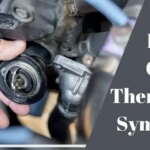
You’re not so sure about uneven tire wear causes? Tires are a critical part of your vehicle, and it’s a good idea to inspect them regularly to see how they’re holding up. Winter’s impacts may linger in the tires regardless of the season: snow, salt, or shifting temperatures, and the common occurrence of winter potholes all contribute to road wear and tear. Therefore, it is critical that you quickly identify and rectify its causes.
In summary, poor alignment, improper inflation, or a worn-out suspension are the most common causes of uneven tire wear.
Table of Contents
What Is Uneven Wear, Exactly?
Your tire tread would wear uniformly in an ideal world, but this rarely happens. Although this most typically occurs on the inside tread of your tires (facing the vehicle cabin), it can also appear on the outside or even precisely down the center of the tread.
Uneven Tire Wear Causes
Here are a few of the most common reasons for uneven tire wear:
1. Inner and outside wear are caused by misalignment
When your car’s tires show severe wear on only their outermost edges, this is known as “toe wear,” which could indicate that your vehicle is out of alignment. Because of the misalignment, a variable amount of pressure is delivered to only the outer edge of the tire, resulting in faster tread wear. If this is permitted to continue, a slope in the tire’s structure might form, resulting in “camber wear.”
You’ll need a trained mechanic to test your vehicle’s alignment and make adjustments according to the norms for your specific make and model to fix this misalignment problem. Such changes should assist cure this type of uneven wear with a new pair of even tires.
2. Inadequate inflation
Another likely explanation for uneven tire wear is that the tires are not correctly inflated. It’s critical to utilize the suggested PSI for your car to ensure that it’s always making the best possible contact with the road.
When a wheel is underinflated, the outer edges of the tread make the most contact with the road and wear out first, followed by the middle patch. When the tires are overinflated, the center patch expands outwards, resulting in less contact with the tread’s outside edges. As a result, the tire will have an equal grip on all tread sections when properly inflated.
3. Suspension damage
Finally, patchy and “cupping” wear can be attributable to suspension damage, which leads to irregular or scallop-like wear patterns. The emergence of either pattern is grounds for significant worry, necessitating immediate suspension and tire replacement.
Failure to intervene could result in the complete tire becoming structurally compromised at an inopportune time.
How to Prevent Uneven Tire Wear
Tire maintenance is essential
The most straightforward approach to avoid uneven tire wear is to check your tire pressure monthly, have your wheels aligned regularly, and physically inspect your tires frequently.
Tire rotation
You’ve probably heard the term “spinning your tires.” This theory is based on the fact that front tires wear out faster due to steering and bearing more weight (mainly if a car’s weight is not evenly distributed). As a result, rotating your tires at each oil change or if you see increased wear on the front tires ensures that your front and rear tires wear at the same rate. This is particularly critical if you use all-season tires throughout the year.
Other suggestions
- Avoid potholes and curb bouncing.
- Check your car’s wheel alignment at least once a year, particularly after a harsh winter.
- Avoid erratic braking and driving.
- Every six months or 6,000 to 8,000 miles rotate your tires. This also aids tire longevity by making them run quieter.
- Have your tires rebalanced if you detect vibrations or shake at highway speeds.
Hi there! I’m Naomi O’Colman. I’ve got years of experience working at an auto repair shop here in Texas under my belt. On top of that, ever since I was a kid I’ve been passionate about the auto industry. Since I’ve joined the team at automotivegearz.com I’ve been enthusiastically sharing my passion and insights with my readers. I’m dedicated to delivering high quality content and helping you stay up to date with the latest automotive trends and products out there!







